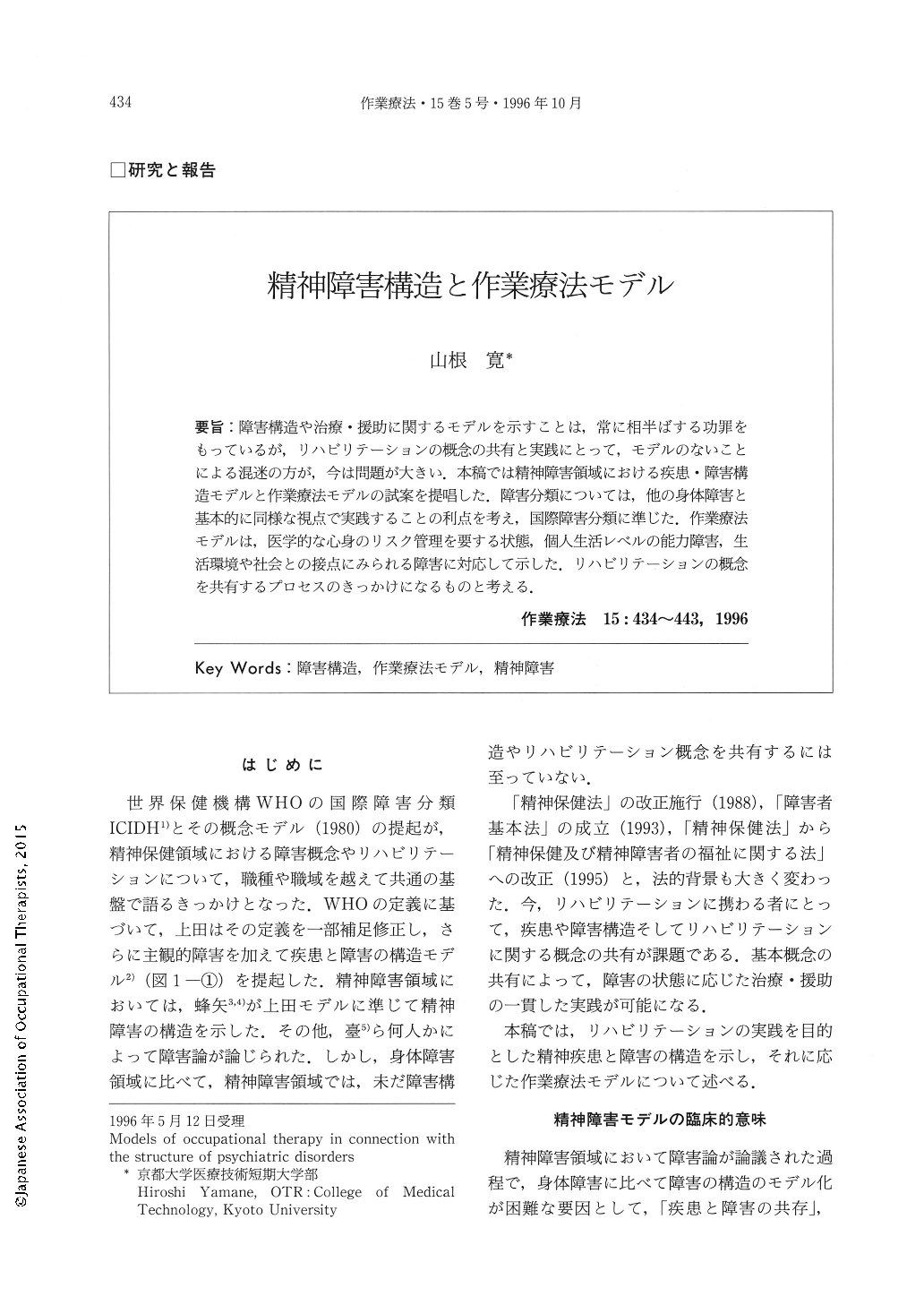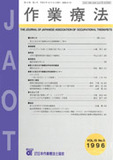Japanese
English
- 販売していません
- Abstract 文献概要
- 1ページ目 Look Inside
- 参考文献 Reference
- サイト内被引用 Cited by
要旨:障害構造や治療・援助に関するモデルを示すことは,常に相半ばする功罪をもっているが,リハビリテーションの概念の共有と実践にとって,モデルのないことによる混迷の方が,今は問題が大きい.本稿では精神障害領域における疾患・障害構造モデルと作業療法モデルの試案を提唱した.障害分類については,他の身体障害と基本的に同様な視点で実践することの利点を考え,国際障害分類に準じた.作業療法モデルは,医学的な心身のリスク管理を要する状態,個人生活レベルの能力障害,生活環境や社会との接点にみられる障害に対応して示した.リハビリテーションの概念を共有するプロセスのきっかけになるものと考える.
It is necessary to have merits and demerits to indicate a structure model of psychiatric disorders and a therapeutic model. Nevertheless, the confusion of no model is a more serious problem than not having an indicating model. It is important to indicate a structure model of psychiatric disorders and a therapeutic model to have a rehabilitation idea in common. The purpose of this paper is to propose a structure model of psychiatric disorders and models of occupational therapy.
The structure model succeeded in showing the image of a mutual influence between disorders, an interaction between environment and disorders, and a relative independence between disorders. From the advantage to treat equally psychiatric disorders and physical disorders, in this structure model, I use "the International Classification of Impairments, Disabilities and Handicaps (ICIDH) "as a classification of disorders.
On models of occupational therapy, I propose three types of models: "OT medical model" ; "OT autonomy model" ; and "OT environmental model" The "OT medical model" shows a model for a state required a medical control of physical risk. The "OT autonomy model" shows a model for disabilities. The "OT environmental model" shows a model for handicaps in the living environment.
This structure of psychiatric disorders and three models of occupational therapy will provide a starting-point for having a rehabilitation idea in common.

Copyright © 1996, Japanese Association of Occupational Therapists. All rights reserved.


